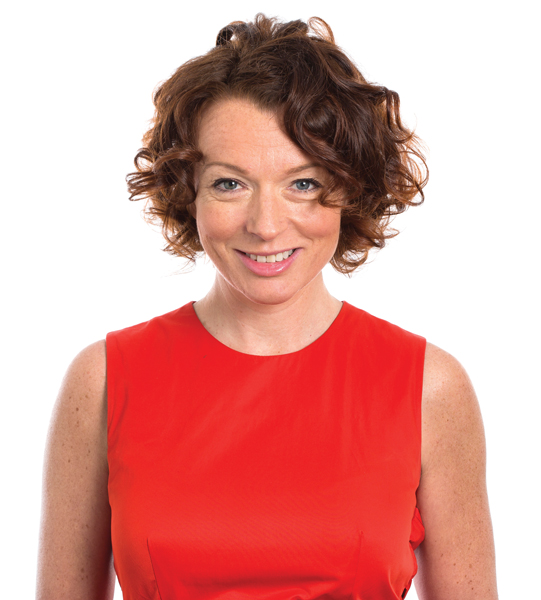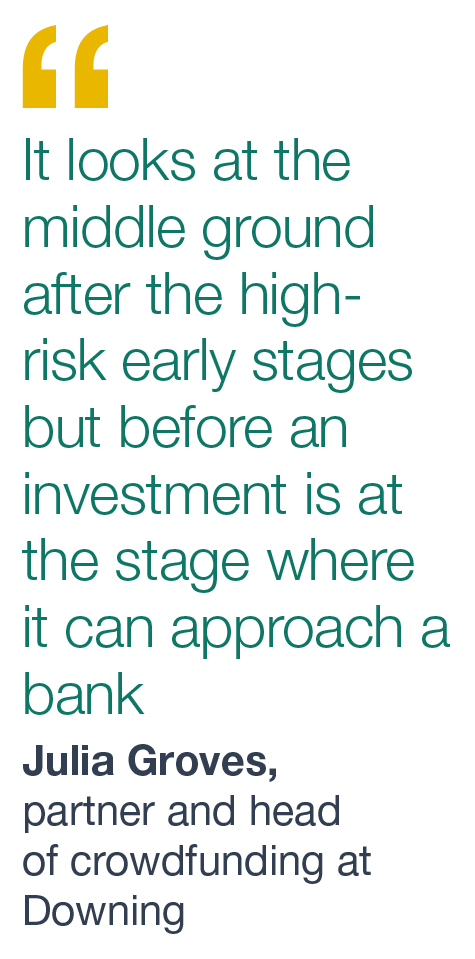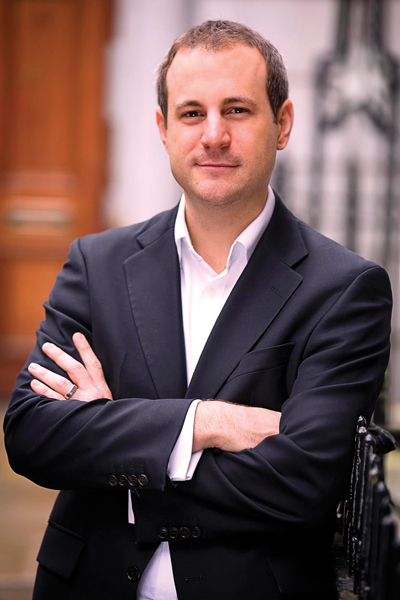The direct approach: Family offices and direct investing

How should family offices approach direct investing? And what is the more important choice – the platforms or the underlying investments? Alison Ebbage examines this rapidly growing multi-billion dollar market
The (bank) lender is dead, long live the (non-bank) lender! Digital innovation has allowed a new wave of direct lenders to spring up now banks are shying away from loan-making as they battle structural reform and economic uncertainty. This popular new area of investment sounds, on the surface, like a natural fit for family offices. It offers them access to a fixed income investment universe that is just emerging as investable, and provides low correlation, short duration, and potentially consistent returns—relative to traditional high-yield debt strategies.
And in a low interest rate, low return environment, the final push for families in the UK, at least, is the gradual erosion of tax breaks that came with enterprise investment schemes (EIS) and venture capital (VC) structures. Such tax incentives now lie with only the higher-risk investments. Direct investing offers a lower risk because the underlying businesses are at a later stage although not quite at the point where they could approach a bank for funding.
 Julia Groves, partner and head of crowdfunding at UK investment manager Downing, says there is “significant interest” in the UK for direct investing.
Julia Groves, partner and head of crowdfunding at UK investment manager Downing, says there is “significant interest” in the UK for direct investing.
“Apart from the tax changes to EIS and VC structures, direct lending methods are due to be extended to individual savings account (ISA) and self-invested personal pension (SIPP) wrappers,” Groves notes.
“The supply is there in terms of the business owners seeking debt investment, not equity, and the demand is there from investors who want good returns in a low interest rate environment.”
This latter point applies the world over. Stephen Findlay, chief executive at BondMason, estimates the market is worth some £2.5 billion ($3.03 billion) in the UK, $20 billion in the US, and more than $1 billion in Asia, excluding China.
But what forms can direct investing take? The most popular option is peer-to-peer (P2P) lending over a platform or within a listed vehicle. The BondMason model, for example, is to act as an intermediary between the investor and the various platforms. This provides the investor with a firm that only deals with quality platforms investing in asset-backed lending, plus diversification via access to a variety of platforms.

“Our model is to act as the intermediary and filter platforms and loans for clients,” Findlay explains.
“The platforms choose the underlying borrowers and price the loans, so the model is highly dependent on choosing the right platform operators. We have met over 50 platforms but approved less than 20. We have reviewed in excess of 3,000 loans, but selected just over 1,000. Each of our clients then have 50-100 plus loan investments.
“The key here is a top-down approach and a good level of understanding of what the various platforms do and what their areas of expertise are, as in property, consumer or corporate. Whether it is a sensible proposition, and choosing the platforms wisely and having good platform diversification takes a lot of the risk out of this.”
A similar method to invest is via a listed fund such as the Ranger Direct Lending Fund. It gives access to quarterly income distributions via a portfolio of US and international debt obligations that have been originated or issued by direct lending platforms.
 Bill Kassul, partner at US employee-owned investment company Ranger Capital Group, comments: “There is a common misconception that we are like junk bonds because we have good yields. But junk bonds give high returns due to high risk whereas we are relatively conservative and seek consistent yields in a space where the banks have moved upstream and created a space.”
Bill Kassul, partner at US employee-owned investment company Ranger Capital Group, comments: “There is a common misconception that we are like junk bonds because we have good yields. But junk bonds give high returns due to high risk whereas we are relatively conservative and seek consistent yields in a space where the banks have moved upstream and created a space.”
Crowdfunding, where investors buy into a tranche of a bond which then invests into a specific underlying asset, is another method, he continues.
“With a crowdfunding bond the underlying investment is asset-backed so it is secured against an existing business and returns are in the region of 5% to 6%,” Groves says.
“These investments are also uncorrelated with the market and often the family office will have wider investment goals such as investing in renewables.”
 The bonds have a minimum tranche of £1 million ($1.2 million) each with a designated underlying investment. At present, renewable energy and care homes are especially popular. Because of the size of the investment there is much more scope for due diligence and making specific choices about which bonds to invest in and which to leave.
The bonds have a minimum tranche of £1 million ($1.2 million) each with a designated underlying investment. At present, renewable energy and care homes are especially popular. Because of the size of the investment there is much more scope for due diligence and making specific choices about which bonds to invest in and which to leave.
According to Groves, a family office will, for example, invest £50,000 each month and then once each tranche matures, decide whether to surrender or reinvest.
But how is the family office to know which option is best for them?
Etienne Boillot, chief executive of European asset manager Eiffel eCapital, says the family office must consider which segment of direct lending suits them best.
“Are their time horizons short, medium, or long? Are they interested in a consumer or small business lending, a specific industry, or broader exposure? And what is the amount they want to invest?” he asks.
“If they are looking at a significant investment then they may want to have a close look at the various platforms, otherwise a series of P2P loans within their self-defined parameters might be sufficient.”
Key to the platform approach seems to be the ability to choose the actual platforms, rather than the underlying investment.
Findlay believes family offices need to set their investment parameters and then choose the platforms that best match them.
“The market has a lot of platforms and there is a mix in both the quality of the platform itself and their ability to find the right underlying investment. A cash drag, when the platform does not fully invest its loan capital, is a risk.”
Quality is of paramount importance; something amply demonstrated by TrustBuddy. The Swedish platform suspended its own operations and reported itself to the authorities after the discovery that lenders were owed £3.6 million more than was held in client accounts, while £3 million loaned to borrowers was not assigned to any lender.
In China, meanwhile, Ezubao saw between $4 billion to $5 billion of its loan book disappear. And Yes-secure in the UK repaid its lenders but was still closed down in 2014.
Groves points out that the P2P platforms are in something of a regulation hiatus.
 “Previously they were regulated with a consumer credit licence but since 2014 they are with the Financial Conduct Authority and many are in the process of being authorised with interim permissions in the meantime. This means that technically they are not fully licensed, although this is through no fault of their own.”
“Previously they were regulated with a consumer credit licence but since 2014 they are with the Financial Conduct Authority and many are in the process of being authorised with interim permissions in the meantime. This means that technically they are not fully licensed, although this is through no fault of their own.”
Ravi Anand, managing director of ESF Capital, says family offices need to be conscious of the different asset classes being offered.
“Consumer, small business, and real estate debt all have different characteristics and risk/return profiles, whilst equity crowd funding is materially different again,” Anand continues.
“As well as great technology, lending platforms need to able establish and price credit risk appropriately. In lending up to £5 million to SMEs, ESF Capital uses cutting edge credit analytics combined with traditional underwriting to provide a significant excess return for the credit risk taken.”
Findlay believes regulation is hindering the market in Europe.
“There are various mindsets in Europe. The Nordic region is generally the most open and France and Germany are holding back, either because the regulators want a full banking licence (Germany) or because they prefer to let the EU lead on regulation (France).”
The listed approach is not without potential pitfalls either. Being listed means that the investment is subject to market volatility the same as anything else listed. This means that there is a risk of it trading at a discount to net asset value (NAV).
“Listed vehicles (of which there are four in the UK) provide an easy way to access the asset class,” Boillot says.
 “However, most are trading at a discount to NAV of as much as 20%—which may be an attractive entry point. It is important to keep in mind that these listed vehicles may not offer sufficient liquidity for large allocations.”
“However, most are trading at a discount to NAV of as much as 20%—which may be an attractive entry point. It is important to keep in mind that these listed vehicles may not offer sufficient liquidity for large allocations.”
Kassul continues: “With an actual fund, all the due diligence is done and there is trust in the process and the people. Our offering is a solid credit analysis story where our investments are asset-backed and underwritten by our own in-house team.”
The crowdfunding bond approach seems to be largely for those family offices seeking to invest a greater amount of money and the ability to choose their own underlying investments. The returns are in the same region as the P2P market, between 4% and 7%, and the bonds are transferable between members but not listed so they cannot be freely sold.
Groves says the crowdfunding bond is a relatively straightforward investment.
“It is a known entity and the underlying investments all operate on relatively easy economic terms, for example, with care homes it is how many beds and what price per bed.”
She says direct investing in its various guises is a relatively new thing.
“It looks at the middle ground after the high-risk early stages but before an investment is at the stage where it can approach a bank.”
The future for alternative lending looks promising thanks to the constant supply of lenders and borrowers.
“As long as regulation remains favourable and interest rates do not increase significantly there is no impediment to this industry growing,” Boillot says.
“The needs of small businesses, as regards debt, have not changed and thus there is a steady supply—the demand is there too, given the ultra-low interest rate environment. In the wake of Brexit, demand from small business borrowers is actually on the up as banks will shy away from lending in an uncertain market environment.”
Ultimately then the industry looks set to mature and to generate the levels of consistency required to tempt pensions and institutions to invest.
With growth, though, will come the inevitable consolidation and so the shape of the market will change.
Boillot says there will be consolidation like every new market.
“These are 'winner takes most' types of businesses. Whether the winners themselves will then be acquired or seek to become listed remains to be seen.”
Kassel concludes: “Although early adopters are the high net worth individuals and family offices, as this gains traction there will be interest from funds of funds and then institutions. This offering is all about consistent returns and wealth preservation—inherently attractive elements to the market.”







